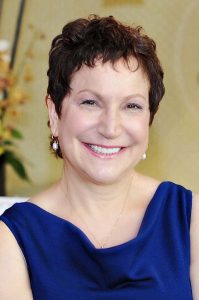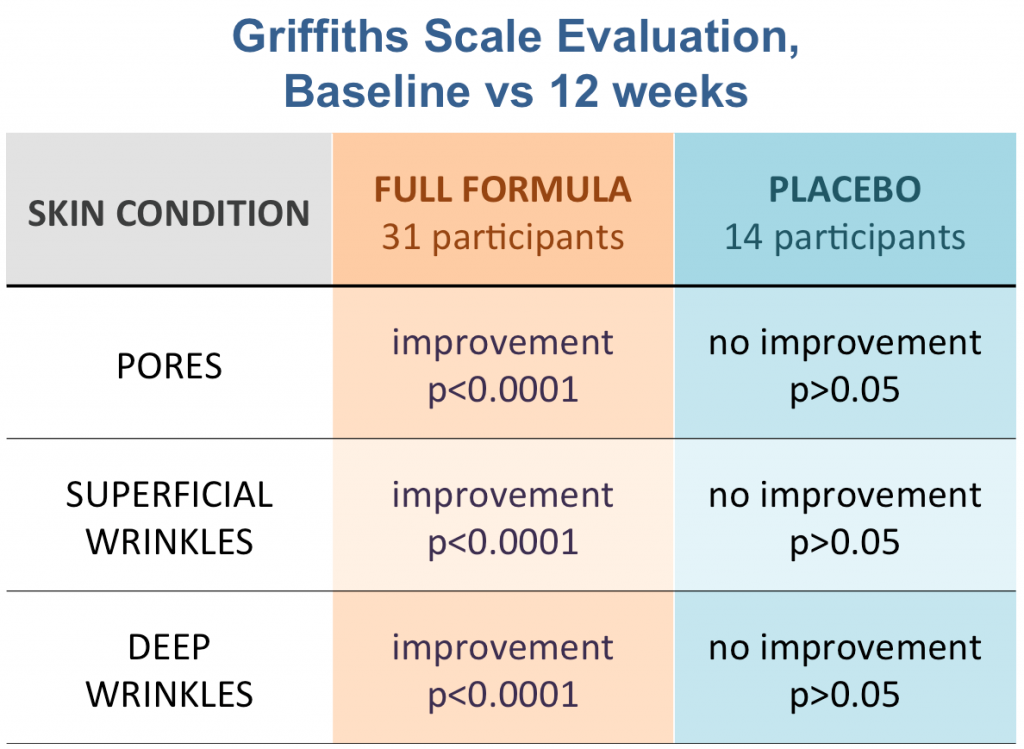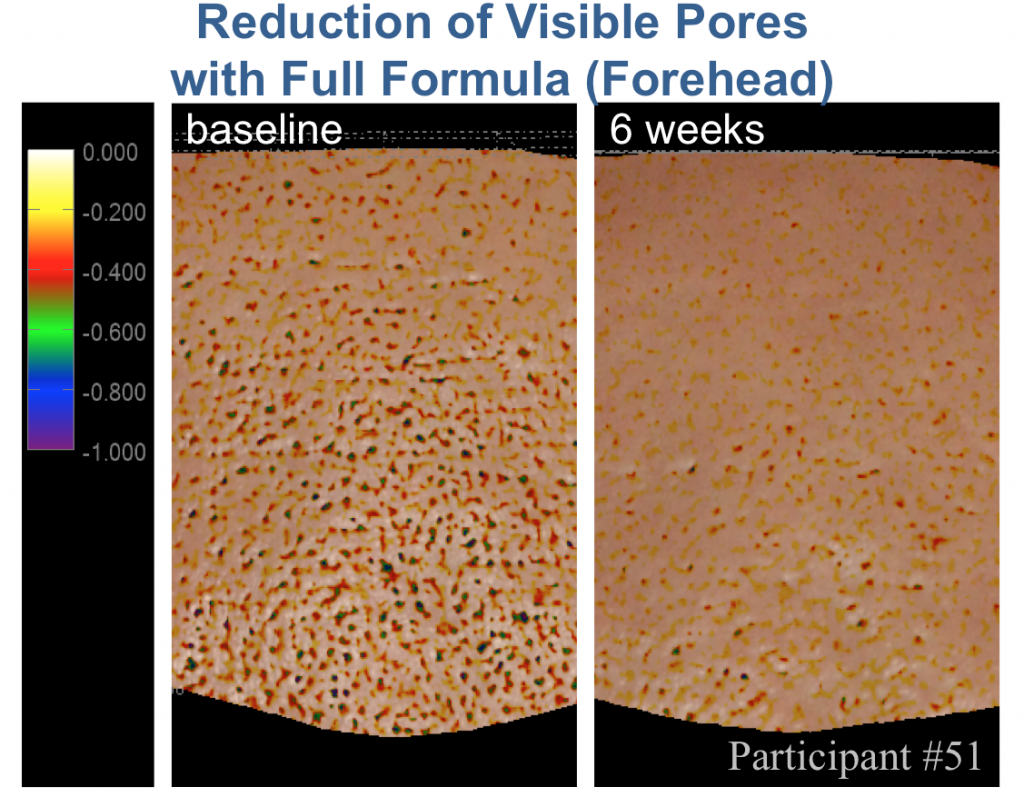Dr. Amy Forman Taub, a cosmetic dermatologist and principal investigator of a rigorous multi-center placebo-controlled clinical trial on Age Repair Defensins®, revealed the results of this important study to aesthetic physicians from across the USA at the recent Vegas Cosmetic Surgery symposium. The histology and high-resolution skin ultrasound data was announced by Dr. Taub, and other clinical investigators Dr. Vivian Bucay and Dr. Gregory Keller, along with presentations demonstrating significant improvement in the minimization of visible pores and wrinkles, as well as the improvement in the wide-range of parameters affecting skin conditions including evenness, brightness and hydration. In this interview with Aesthetic Insider™, Dr. Taub discusses the multiple advanced methods of evaluation of skin conditions used in the study, and the confirmed results. Dr. Taub is a Board Certified Dermatologist and founder of Advanced Dermatology and skinfo® Specialty Skincare Boutique in Lincolnshire, Illinois. Advanced Dermatology is a state of the art cosmetic dermatology practice nationally recognized for excellence in dermatologic care. To learn more about Dr. Taub, visit www.advdermatology.com. To learn more about DefenAge™, visit www.defenage.com.

How did you first come across the DefenAge™ line?
I was introduced to DefenAge by the Vice President of Sales Wayne Laura, who I’ve known for many years. He was excited about the product as he felt it was groundbreaking science. I respected his opinion and asked to meet with the founder and inventor of DefenAge, Nikolay Turovets, PhD. I spent some time with him and he explained the science behind why he chose to create this product and I was very taken with the science. The story to me was compelling in that it addressed some of the drawbacks of growth factors of which I have been a big proponent. I decided to try it on myself; within a few days I saw that there was an improvement of my skin. I used it on my arms first as I take care of the skin on my face and neck and didn’t expect it to improve those areas. The skin on my arms had fine wrinkling and photo damage since I don’t take care of them as well as my face. Within three to four days my arms looked better. After that, I used DefenAge on my face and neck and saw improvement there too. I then began to offer DefenAge to my patients many of whom love it. When the idea of a full clinical trial and study was presented, I was eager to further investigate the mechanisms of the Age-Repair Defensins® in DefenAge and to participate in the study.
Please explain the study of Age Repair Defensins®
The study took place in three different medical centers. Dermatologist Dr. Vivian Bucay of San Antonio, TX is well known for her work and her expertise in topical therapies was an investigator, as was facial plastic surgeon Dr. Gregory Keller of Santa Barbara, CA. Dr. Keller is also an expert at stem cells among many other things related to skin aging and aesthetics. The study involved a total of 45 patients that were divided into groups of 15 at each site. There are three products in the DefenAge line, a lotion, a serum and a masque. The lotions are used twice a day and the masque is used one to two times per week depending on how well a person can tolerate it. The masque is an exfoliant but it is quite gentle. The Age-Repair Defensins are in both the serum and the cream. The serum has a higher level of defensins, the cream has much higher levels of antioxidants. I have what I call a “core four” of ingredients that I like to see in skin care products and with DefenAge for example, the defensins stimulate new growth, the antioxidants are there for protection and defense, and the exfoliation function is performed by the masque. The last of my “core four” skin care requirements is sunscreen, which DefenAge does not have because they believe there are many good sunscreens on the market already that complement the DefenAge regimen.

How many people in the study used the DefenAge product over a placebo?
Two-thirds of the study group used product with the actual ingredients, and one-third used the placebo. The great thing about this study is that no-one, not even the clinical investigators (Dr. Bucay, Dr. Keller, or myself), knew which patients had the real product or the placebo. The placebo product looked and felt like DefenAge and was packaged identically in the same as the bottles that contained the actual Age-Repair Defensins. It was a true double blind study. Sometimes people will do a double-blind study where they are using the product, and then on the other side of the study they use nothing. Well, obviously, if you’re going to be taking care of your skin and putting moisturizer on twice a day and using a sunscreen, you’re bound to see improvement. But what we really wanted to prove was whether it was the actual ingredients creating the improvement. They each also received a mild cleanser and a sunscreen, mainly because we wanted everybody to have the same exact skincare routine. We didn’t want anyone to have skin care that was different, so it was a pretty rigorous study.
How did the study patients use the products given to them?
They were instructed to apply the 24/7 Barrier Balance Cream and the 8-in-1 BioSerum twice each day, and to use the 2-Minute Reveal Masque once to twice per week. They washed twice daily with the cleanser and applied the sunscreen after they had applied the 8-in-1 BioSerum. We also instructed each of them to use the products behind their ears because there was a subset that were going to have a biopsy performed, some of them at six weeks, and then again at twelve weeks. Everybody that had a biopsy performed had it before at baseline as well as on the opposite ear.
How often were the patients monitored?
Each patient was consulted and tested at baseline, at six weeks and at twelve weeks. Some patients had a baseline biopsy performed behind the right ear as the skin in that area is similar to that of the face (and we wouldn’t want to leave a scar on the face) and had a second biopsy at six weeks, and some at twelve weeks.

Did you also use any special equipment to further monitor the results?
Yes. We also took photographs and used the Griffiths scale which was the scale that was worked out by Dr. Griffiths that grades many factors of aging separately. Each of the investigators actually looked at each patient at baseline six weeks and twelve weeks, graded them on each parameter as well as globally. At Dr. Keller’s office, they had some very advanced diagnostic tools including QuantifiCare (a French company that can quantitate skin changes), as well as a technology called Cortex. Cortex is a high-resolution skin ultrasound with features that can be colored so you can see them better, and has measuring tools to evaluate parameters of skin quality. We also performed immunohistochemistry on all biopsies. The purpose of all of this different testing was to show, by using a variety of different methods, some objective measurements to see if we could corroborate our findings in more than one way.
What are Defensins?
Defensins are molecules that we already have in our skin. When cut, scraped or wounded, the skin’s immune cells release defensins. Our bodies make them and release them as necessary. There are also particular stem cells called Lgr6+ and the sole function of this stem cell is to make new keratinocytes which are the cells there in the epidermis when there’s been damage to the skin. When there is damage to the skin, the body’s immune system comes to form cells called neutrophils that release these defensins, the defensins then turn on the stem cell locus in the hair follicle and the hair follicle produces brand new skin cells to populate and fix the tear or the cut or whatever has traumatized the tissue.
How do defensins actually work?
The idea behind this is to create a biomimetic which means a similar copy of the peptide. We’ve heard a lot about that lately. For instance, Kybella is a biomimetic protein that mimics the function of what the gallbladder creates to break down fat, so this idea of creating something that the body already makes is a great one because it’s a natural process. With the DefenAge product, we are using a natural function to do something else, and the defensins are turning on these cells to make new cells that usually are dormant. They lay dormant because their only function is to come out when your skin is burned, scraped, cut or injured in some way. They are completely brand new cells when they’re formed. The stem cell makes a brand-new cell which then repopulates the skin. So, we’re talking about a cell that’s much fresher, it hasn’t had a chance to deteriorate or acquire any mutations and, therefore, the skin that is replaced looks brighter, smoother, more youthful and with less obvious lines and wrinkles.
How would you compare defensins with retinols?
Retinols do thicken the skin but they also tend to inflame the skin. The study showed that defensins also thicken the skin, but they do not cause inflammation which is very significant. Retinols are phenomenal molecules that do a lot of things for the skin, but many people can’t tolerate them and the study showed that defensins can do many of the functions of a retinol without some of the deleterious aspects, such as dryness and inflammation.
What testing was used to reach this conclusion?
The biopsies of the study patients were reviewed and microscopically measured by well-known pathologist Dr. Darius Mehregan. He reviewed the biopsies before product use, at six weeks and at twelve weeks. One of the results that was incredibly exciting for us to see was that the epidermis, which is the top layer of skin, was thickened by the DefenAge product. Generally speaking, when you thicken the epidermis it’s going to be less transparent, so you’re going to have a brighter reflection on it. It’s also going to retain more water. Those study patients who had the product had on average one hundred microns more thickness of the epidermis and those with the placebo product did not have that, and that was found to be statistically significant. The research had shown that defensins do not increase inflammation corroborating the theory that it was due to the LGR6+ stem cell activation.

How would you compare defensins with growth factors in skin care?
I’m very pro-growth factor, but one of the concerns that we dermatologists have with growth factors is that they turn on everything. In other words, the growth factors that we have mainly in the skincare industry can perform different functions and there is an unspoken fear that they might stimulate bad cells. For instance, if there a basal cell or a squamous cell or something that has a mutation in the skin where the growth factor is being applied, will the growth factor stimulate that bad cell to grow more? There is no evidence of that, but it is a concern. Dr. Mehregan performed immunohistochemistry on the biopsy specimens looking for a marker called Ki-67 it has been shown that in basal cell and squamous cell carcinoma and also breast cancer , that it’s very elevated in cells that have cancer. None of the patients that received either the placebo version or the actual version of the DefenAge product had an increased concentration of this Ki-67 staining in their cells. This doesn’t prove that we’re not causing skin cancer but it’s certainly very reassuring that we’re not increasing the marker that is associated with skin cancer, and that does set defensins apart from growth factors.
Please explain in detail the final results of the study
One of the many salient results for me was that unlike retinols (remember I like retinols so I’m not trying to bash them here) defensins do not remove the stratum corneum by exfoliating the skin. When the stratum corneum is removed the skin becomes even more sensitized to the sun and the need for sun screen and protection is greater than ever. The study showed that the basket weave matrix of the stratum corneum was not damaged and that the epidermal thickness increased, and the cells appeared more organized. The other results we found was a statistically significant improvement in the appearance of pores, including pore size. This was shown clinically to the Griffith scale, but it was even more pronounced by the objective imaging of both the 3-dimensional imaging and by the actual measurement of the pores by the QuantifiCare technology. We did see wrinkle improvement, both fine wrinkles and coarse wrinkles, again using the QuantifiCare 3-dimensional imaging and analysis, and by each investigator’s clinical evaluation based on the Griffiths scale. We were also able to reduce excess pigmentation that was also quantified by the Cortex system. We’re not calling it a lightening agent but we do think the effect was possibly due to the improvement of the epidermis.

What was the general age of the patients in the study?
The age range was 41-70. They were all women and the average age was 60. They varied in skin types too. Also, the women in the study were brand new to quality skin care which was important to each of the investigators as we did not want to study patients who had already been on a good skin care routine for several years. We needed to study people with little to no past history of good skin care.
What was the satisfaction level of the patients in the study?
We saw a very high level of satisfaction, over 90% satisfaction. The highest satisfaction was seen in the patients that had the real product. But I have to be fair in saying that even the patients using the placebo liked how their skin looked even though we did not see as much improvement.
What has the feeback been from other doctors that have seen the results of this study?
The feedback from other doctors has actually been incredible. They were very excited about seeing a study that was so rigorous. One of the problems with skincare products that are not prescription is that many of them do not do clinical trials of this nature. The FDA is strict about claims skin care companies can make. For DefenAge to break that mold of behavior and put its brand on the line with such a rigorous study has impressed a lot of doctors.
Would you say that the DefenAge skin care line is a real game changer in terms of the future of skin care?
Yes. I think it really is. I’ve come to the conclusion based on the study, that the science matches up to what we were expecting from the mechanism of action which makes it a real game changer. It’s also consistent with some game changing that’s going on in other areas of our fields such as how we’re understanding the molecular mechanism for eczema and for psoriasis, and as I mentioned previously about biomimetic proteins. Age-Repair Defensins found in the DefenAge products have proven that they stimulate a specific pathway to create new skin and I think that this is the new generation of skin care.
To learn more about Dr. Amy Forman-Taub, visit www.advdermatology.com. To learn more about DefenAge, visit www.defenage.com.
To learn more about Quantificare, visit www.quantificare.com.

To listen to Dr. Taub on Aesthetic Insider™ Radio, CLICK HERE!

Other articles related to DefenAge™
Dr. Vivian Bucay Discusses Dormant Skin Cells.
Dr. Natalie Curcio: The Skin Care Revolution That Is DefenAge™.


[…] Check out the interview […]